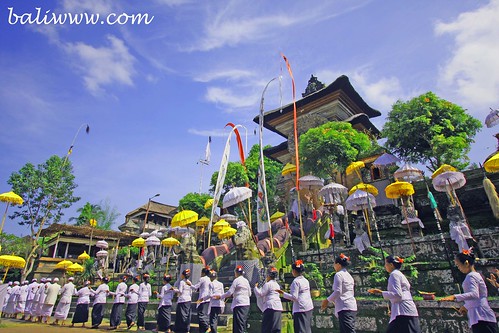Temple and societies in Bali has a unique bond in which a temple serves as part of identity of a society. All traditional Balinese social unit from households to kingdoms, possess their own temples where offerings are offered to the deities concerned with their affairs, for example market deities in the market temple, ancestors in the household and clan temple. In other words, each social unit forms congregation of specific temple or shrines, which symbolically defines its place in Balinese social universe.
This principle has survived into modern era, as banks, government offices, and even tourist hotels construct small temple on their ground, which superficially establish their existence but as for identity more light have to be shed on this matter.
The Subaks or irrigation organizations have their water temple in which Dewi Danu, the goddess of lake or other deities which has strong relation with the farmers and agricultural activities are venerated. The traditional markets have their market temple in which Dewi Melanting, the goddess of trade is given homage. The traditional institutions have obvious relationship with particular deities and give identity to their temple and institution. While modern institutions like office buildings have no immediately obvious relationship with particular deities and so it is difficult to assign any identity to the temple and to know which deities should be invited on the temple anniversary.
Unlike traditional Balinese temples which consist of collection of shrines for specific deities which show the identity of the temple – whether it is a clan temple or water temple. The temples of new institution usually only has a single shrine which is known as padmasana (the lotus throne or throne of God) which is the place where God is revered. The reverence of God in these new temples gives no specific identity to these new temple since all temples has a shrine to venerate God and hence the temple does not give any identity to these new institutions.











0 Comments
Post a Comment